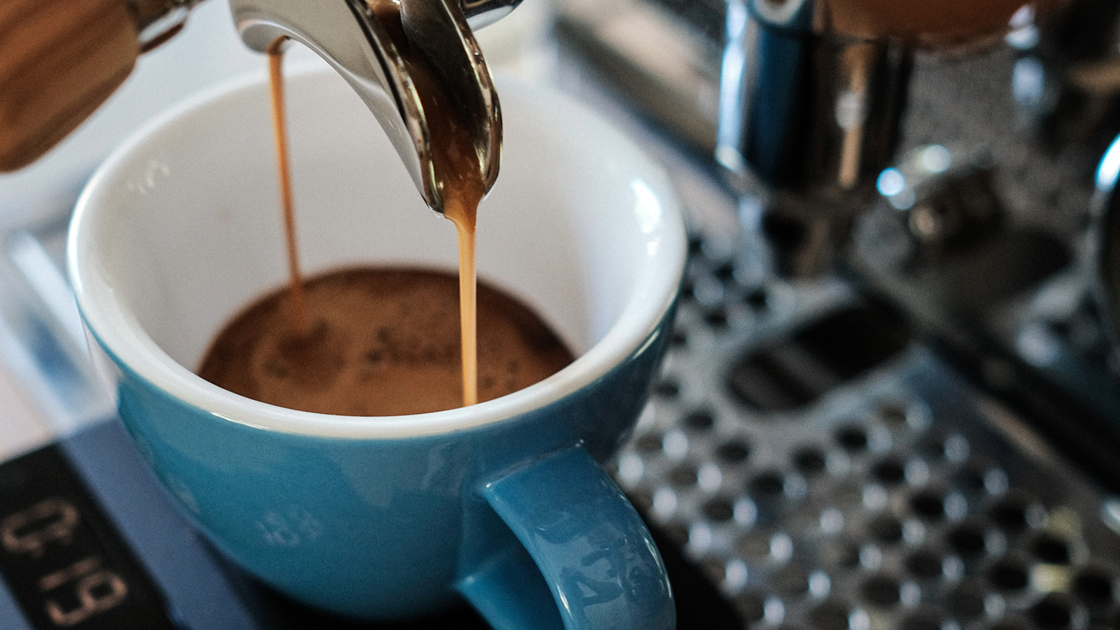When we brew coffee, we’re doing far more than mixing hot water with ground coffee beans. Brewing is a controlled chemical extraction where hundreds of soluble compounds move from the coffee grounds into the water. Understanding this process helps you brew a more balanced cup — whether you’re making an espresso, filter coffee, or a cafetière at home.
What Is Extraction?
Extraction is the process of dissolving desirable flavour compounds from roasted coffee into water. Coffee contains over 1,000 chemical compounds, including acids, oils, sugars, and aromatic molecules. Not all dissolve at the same time or at the same rate, which is why controlling brewing variables matters.
The Three Key Stages of Extraction
When water meets coffee, extraction doesn’t happen all at once: it progresses in stages.
Early Extraction: Acids & Bright Flavours
In the first few seconds, the most soluble compounds dissolve first — mainly organic acids such as citric, malic, and chlorogenic acids. These give coffee its brightness and tang. If your coffee tastes overly sharp or sour, it’s often under-extracted, meaning this early stage dominated the cup without enough sweetness to balance it.Mid Extraction: Sweetness & Balance
Next, sugars and desirable aromatics dissolve. This is the “sweet spot” where coffee becomes round, balanced, and complex. Caramelised sugars formed during roasting bring body and sweetness. Most well-brewed coffees aim to highlight this middle phase.Late Extraction: Bitters & Dryness
Towards the end, heavier compounds such as tannins and bitter alkaloids extract. If the brew runs too long, these compounds overwhelm the cup, resulting in dryness or bitterness — a sign of over-extraction.

Sour = under-extracted, bitter = over-extracted. The sweet spot is in the balanced middle stage.
Extraction Yield: The Science Behind a Balanced Cup
Professionals measure extraction using two metrics:
| Term | What It Means |
|---|---|
| TDS (Total Dissolved Solids) | How strong the coffee is – the concentration of dissolved coffee in the cup |
| Extraction Yield | The % of the coffee grounds that actually dissolved into the water |
A typical ideal extraction yield is 18–22%. Below 18% is under-extracted; above 22% becomes over-extracted. You don’t need lab tools to aim for this – a balanced cup usually tells you you’re close.

What Affects Extraction?
Several variables influence how quickly and how much flavour dissolves:
Grind Size: Finer grinds extract more quickly (bigger surface area). Too fine = bitterness; too coarse = sourness.
Water Temperature: Hotter water extracts faster. The ideal range is usually 92–96°C for most methods.
Brew Time: Longer contact = more extraction. Each brew method has its own ideal time (e.g. espresso ~25–30 sec, filter ~2.5–4 mins).
-
Coffee-to-Water Ratio: Changing the ratio alters strength and extraction. A standard starting point for filter is 1:16 (1g coffee to 16g water).

Why Coffee Solubility Varies
How easily flavour compounds dissolve depends on the roast:
- Medium roasts are less soluble because the beans retain more density and structure. They usually benefit from a finer grind or a slightly longer brew time to bring out full flavour.
- Medium-dark roasts sit in the middle, with increased porosity from extended roasting. They extract more readily, producing a fuller body and deeper flavour, often well suited to espresso, moka pot or richer filter brews.
- Dark roasts are the most soluble as the longer roasting creates a more porous cellular structure. They extract very quickly and can become bitter if over-extracted, so a coarser grind, lower temperature, or shorter brew time often works best.
The Goal: Balance
Good extraction is about harmony — acidity, sweetness, and bitterness all playing their part. When brewing, think of yourself as managing a chemical process: adjusting time, temperature, and grind to guide extraction into that balanced middle zone.
Quick Troubleshooting Based on Taste
| Taste | Likely Cause | Fast Fix |
|---|---|---|
| Sour, sharp, thin | Under-extracted | Use finer grind or increase brew time |
| Bitter, dry, harsh | Over-extracted | Use coarser grind or reduce brew time |
| Weak but bitter | Wrong ratio or too coarse grind | Increase coffee dose or grind slightly finer |
| Too strong | Ratio too high | Add more water or reduce coffee dose |


